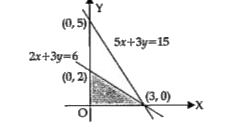Diamond is insoluble in all solvents. True or False.
Step-by-Step Solution:
1. Understanding Diamond's Structure:
- Diamond is a form of carbon where each carbon atom is covalently bonded to four other carbon atoms. This creates a strong and stable structure.
2. Identifying the Type of Structure:
- The arrangement of carbon atoms in diamond forms a three-dimensional (3D) lattice structure. This structure is very rigid and tightly packed.
3. Analyzing Solubility:
- Solubility in solvents generally depends on the interaction between the solute (in this case, diamond) and the solvent. For a substance to dissolve, the solvent must be able to break the bonds holding the solute together.
4. Covalent Bonds in Diamond:
- In diamond, the carbon-carbon bonds are very strong due to covalent bonding. These strong bonds make it difficult for any solvent to disrupt the lattice structure.
5. Conclusion:
- Since diamond's strong covalent bonds and rigid lattice structure prevent it from interacting with solvents, diamond is indeed insoluble in all solvents. Therefore, the statement "Diamond is insoluble in all solvents" is True.
---
- Diamond is a form of carbon where each carbon atom is covalently bonded to four other carbon atoms. This creates a strong and stable structure.
- The arrangement of carbon atoms in diamond forms a three-dimensional (3D) lattice structure. This structure is very rigid and tightly packed.
- Solubility in solvents generally depends on the interaction between the solute (in this case, diamond) and the solvent. For a substance to dissolve, the solvent must be able to break the bonds holding the solute together.
- In diamond, the carbon-carbon bonds are very strong due to covalent bonding. These strong bonds make it difficult for any solvent to disrupt the lattice structure.
- Since diamond's strong covalent bonds and rigid lattice structure prevent it from interacting with solvents, diamond is indeed insoluble in all solvents. Therefore, the statement "Diamond is insoluble in all solvents" is True.
Topper's Solved these Questions
- CARBON AND ITS COMPOUNDS BOOK - S CHAND IIT JEE FOUNDATIONCHAPTER - CARBON AND ITS COMPOUNDS EXERCISE - QUESTION BANK 19
3 Videos
- CARBON AND ITS COMPOUNDS BOOK - S CHAND IIT JEE FOUNDATIONCHAPTER - CARBON AND ITS COMPOUNDS EXERCISE - QUESTION BANK 19 (NAME THE FOLLOWING )
18 Videos
- CARBON AND ITS COMPOUNDS BOOK - S CHAND IIT JEE FOUNDATIONCHAPTER - CARBON AND ITS COMPOUNDS EXERCISE - QUESTION BANK 19 (FILL IN THE BLANKS WITH THE CORRECT ANSWER :)
5 Videos
- ATOMIC STRUCTUREBOOK - S CHAND IIT JEE FOUNDATIONCHAPTER - ATOMIC STRUCTUREEXERCISE - SELF ASSESSMENT SHEET -20
23 Videos
- COAL AND PETROLEUMBOOK - S CHAND IIT JEE FOUNDATIONCHAPTER - COAL AND PETROLEUMEXERCISE - Self Assessment Sheet-16
10 Videos
Similar Questions
Knowledge Check
Which of the following is insoluble in organic solvents?
ALilBLiBrCLiClDLiFAssertion (A): Potassium chloride is insoluble in kerosene.
Reason (R) : Ionic compounds are insoluble in organic solvents.ABoth (A) and (R) are true and (R) is correct explanation of the assertionBBoth (A) and (R) are true but (R) is not the correct explanation of the assertion.C(A) is true but (R) is false.D(A) is false but (R) is true.STATEMENT - 1 : Acetic acid and methyl formate are functional isomers . Acetic acid is soluble in water wherease methyl formates is insoluble .
STATEMENT - 2 : Intermolecular hydrogen bonding between solute and solvent dcreases solubility of solute in the solvent.AStatement -1 is true, Statement - 2 is true , Statement -2 is a correct explaination for statement - 1BStatement -1 True, Statement - 2 is True , Statement - 2 is NOT a correct explanation for statement - 1 .CStatement -1 is True, Statement - 2 is False .DStatement -1 is False , Statement -2 is True .
Diamond is the softest natural substance.
True/False
View SolutionSulphanilic acid is insoluble in water and organic solvents. Explain.
View SolutionAll triangles are equal in area. True or false.
View Solution
Here (0, 2), (0, 0) and (3, 0) all are vertices of feasible region. True or false.
View SolutionWhen a true solution is mixed with an excess of the other solvent in which the solute is insoluble but solvent is miscible, a ________ is obtained
View Solution
